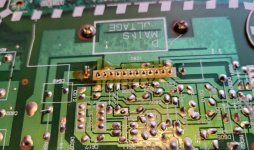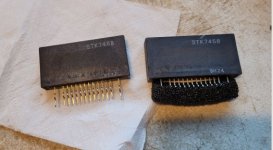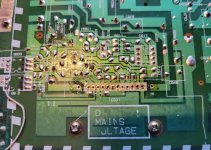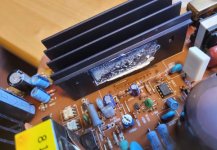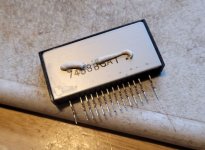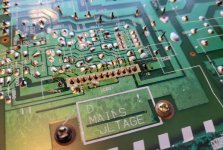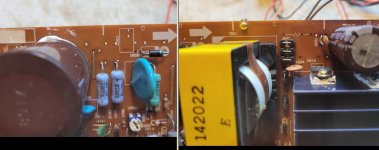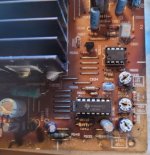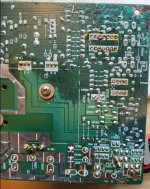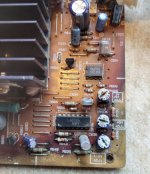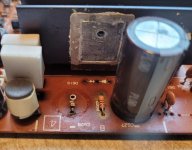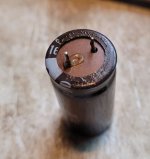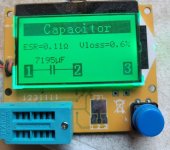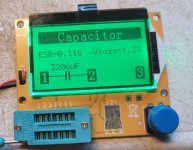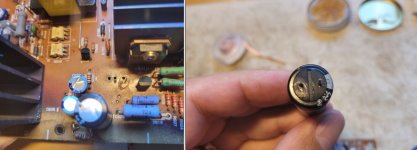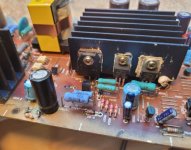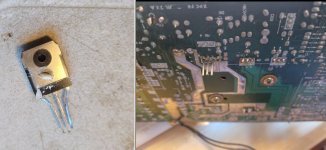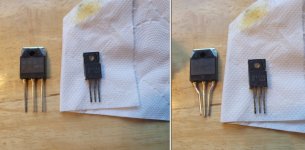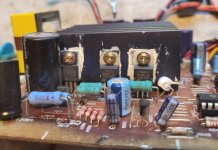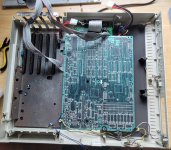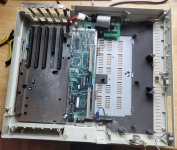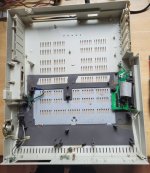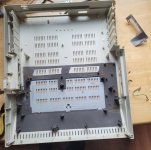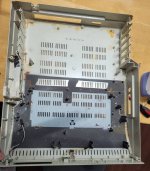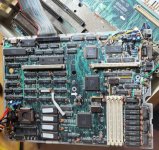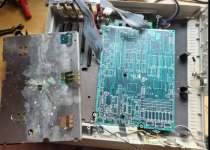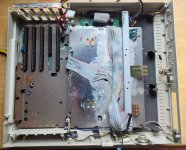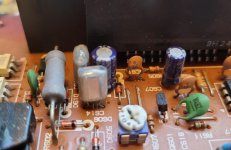No new diode in my mailbox when I got home from work. That does it. I put the old diode back to
the pcb to continue checking. Also, cap C628 went back to the pcb. Although it looked a bit nasty at the
bottom, its ESR value seems reasonably ok if I compare it to tables found on-line.
Now, I got new replacements for IC605 and IC603. Pulled the old ones out and installed IC sockets. These
too unfortunately changed nothing.
When power is turned on, the 5V fan spins for say, one second and then stops. Hard drive(s) do not do anything.
I'm using modern hard drive to test that works on ATX psu. By the way, I did also try now the old 40Mb hard drive
with the ATX psu and at least it does start spinning! So that at least is not completely dead, though this does not confirm
that it actually will work, yet. Floppy drive does not react at all either with the ATX psu, so I tried a bit more modern
floppy. Also that had no effect. I had assumed that at least the LED flashes at least once, but nothing. I therefore will always
use the HD as load when testing this. The new one, I don't want to stress out the good old hard drive unnecessarily.
Furthermore, I wanted to see if plugging in the amstrad 2286 motherboard changes things with the psu. If that was
required to be on for the psu to turn on. That too had no effect.
I think I may run out of ideas soon. I still have a couple of 2sc1815 transistors that I could use to replace Q616 and Q606.
Soon after that I should try to figure out what are the next bunch of components that I should order in hope to bring
this unit back to life.
edit:
Oh yeah, there are some strange things at the pcb. Like R601 and C606 that are missing completely.
But there is nothing suggesting there ever was anything there after the factory, no broken legs or loose pieces
inside the psu box. Maybe this psu is updated version from Amstrad 2086 psu and not required in this computer version.
Just a bit odd that these markings are here, but no components are installed on them.

